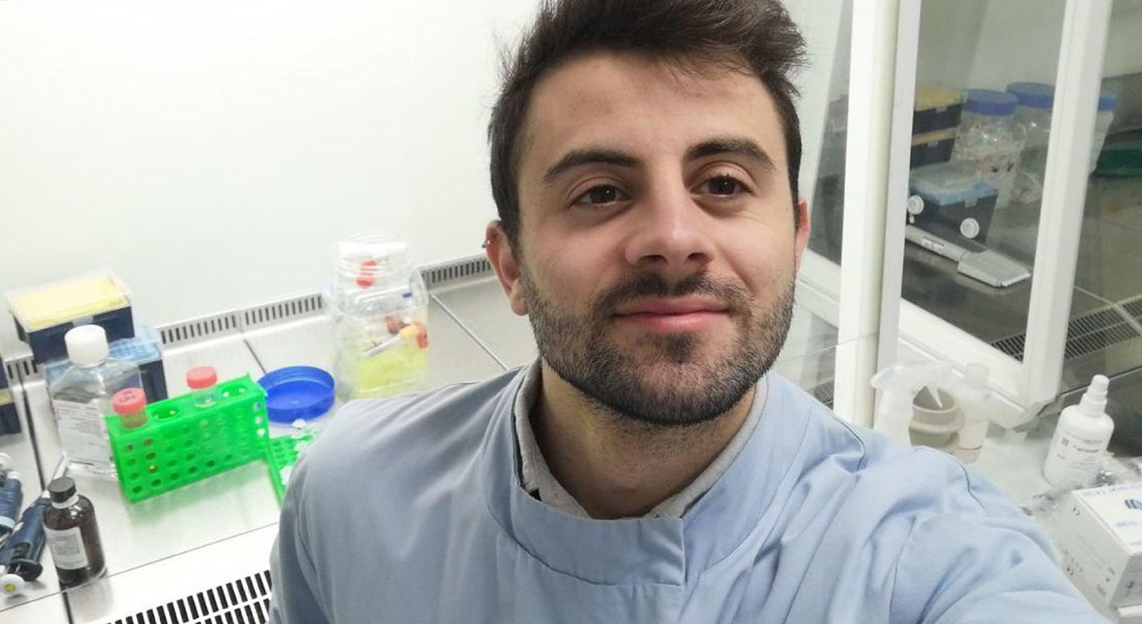Today we want to introduce you to one of our PhD students; Macia Sureda Vives, who is helping with the development of COVID-19 testing.
By Sophie Arthur
April 22, 2020
Time to read: 3 minutes
We are extremely proud of all our colleagues who are contributing to the COVID-19 emergency response. We want to celebrate them by highlighting their contributions over the next few weeks in this mini-series of ‘LMS Emergency Response to COVID-19’. Today we want to introduce you to one of our PhD students; Macia Sureda Vives, who is helping with the development of COVID-19 testing.

What is your current role within the COVID19 response?
I am assisting Prof. Graham P. Taylor lab at St. Mary’s Campus in collaboration with Public Health England in the development of novel tests for the detection of antibodies to SARS-CoV-2. We are already at the validation step for some assays that are giving promising results, and using them to follow the immunological response of patients over time. This should help us understand how long the protection lasts inside the body after infection (if any is developed). Nevertheless, we have not stopped designing and testing new methods, assessing distinct virus antigens, trying to capture different antibodies, etc. We want to make sure that we come up with the best solution – it’s an ongoing challenge. Simultaneously, we are setting up the lab to be able to process as many samples as possible once the population starts getting tested.
How do you envision that is going to help in the fight against COVID19?
Serological assays are fast, simple to implement in any hospital and can inform on the infection stage of the patients and their antibody production, unlike current molecular diagnostic tests. Furthermore, while the virus might not be uniformly spread in the body, antibodies are, reducing the chances that a case should not be detected due to sampling. Therefore, these tests are urgently needed to screen a wider range of the population and to follow up patients, which will allow us to generate more robust epidemiological models and come to better understand the immunological response against the virus. Importantly, these tests may be used to issue the “immunological passports” that should allow us, progressively, to go back to work and reduce the impact that this pandemic is having on the world economy and our individual lives until a vaccine is available. Moreover, if a second wave of infections were to happen, this technology would be readily available, thus, enabling a timely response.
What is your research at the LMS about?
I am at the first year of my PhD in the Synthetic Biology lab led by Karen Sarkisyan. Many labs across the world are using enzymatically-produced light, namely bioluminescence, as a reporter technology – from diagnostics, food testing, drug screening, tracking tumour growth and cell migration, to measuring molecular interactions inside cells. However, current methods for the development of new bioluminescent proteins rely on sophisticated robotic workstations that limit the wide application of this technology. Before this pandemic started, my supervisor and I were creating the first automated, high-throughput screening method for the development of bioluminescent proteins in vivo. In essence, we are engineering light-sensitive genetic circuits that can self-select the best performing mutants from a library. Thus, we will delegate the laborious work of evaluating millions of mutants to individual bacteria based on a flexible threshold imposed by the researcher, so that screening can be performed by simply growing cells overnight. We believe that this will contribute to democratise protein engineering in bioluminescence, propelling the technological development in the field and, thus, resulting in many other areas of research being benefited.